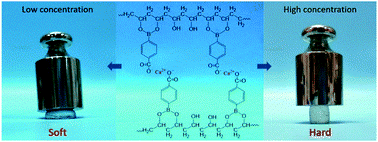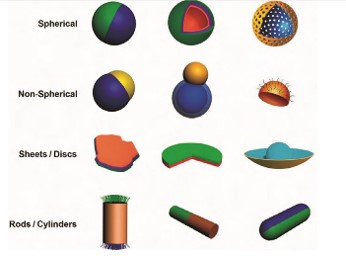1. Li, Xiaoman; Han, Bing; Wang, Xiaoyan*; Gao, Xuejun; Liang, Fuxin; Qu, Xiaozhong; Yang, Zhenzhong. Suppressing Inflammation and Enhancing Osteogenesis Using Novel CS-EC@Ca Microcapsules, J. Biomed. Mater. Res. Part A, 2018, 106(12): 3222-3230.
The aim of this study was to investigate the suppression of inflammation and enhancement of osteogenesis using chitosan-coated calcium hydroxide‐loaded microcapsules (CS-EC@Ca microcapsules) in vivo. Circular defects were created in the mandibular bones of rabbits and filled with Ca(OH)2, Bio-oss, or CS-EC@Ca microcapsules, and rabbits without drug implantation served as the controls. Lipopolysaccharides were injected in situ daily in all groups for 7 days. Mandibular bones were investigated at 4 and 12 weeks after surgery using micro-CT, histological observations, and real-time PCR analysis. At the post operation, there was more substantial nascent bone in the microcapsule and Bio-oss groups than in the control group. The recovery of the rabbits in the Ca(OH)2 group was slower than the control group, as determined using micro-CT and histological staining. Osteocalcin and collagen type I production was not significantly different between the microcapsule and Bio-oss groups(p > 0.05), but the expression levels of the two molecules were significantly increased compared to the control and Ca(OH)2 groups at postoperation (p < 0.05). The mRNA transcript levels of inflammatory factors in the microcapsule group had the most reduced expression of IL-6 and TNF-α (p < 0.05). The microcapsules significantly reduced inflammation and promoted osteogenesis in this rabbit model of inflammatory bone destruction. Our findings indicate that CS-EC@Ca microcapsules hold potential for use in apical periodontitis treatment.
https://doi.org/10.1002/jbm.a.36517
2. Xia, Guanglin; Zhang, Baoping; Chen, Xiaowei; Sun, Dayin; Guo, Zaiping; Liang, Fuxin; Zou, Weidong; Yang, Zhenzhong*; Yu, Xuebin*. Molecular-Scale Functionality on Graphene to Unlock the Energy Capabilities of Metal Hydrides for High-Capacity Lithium-Ion Batteries, ACS Nano, 2018, 12(8): 8177-8186.
Metal hydrides have attracted great intentions as anodes for lithium-ion batteries(LIBs) due to their extraordinary theoretical capacity. It is an unsolved challenge, however, to achieve high capacity with stable cyclability, owing to their insulating property and large volume expansion upon lithium storage. Here, we introduce self-initiated polymerization to realize molecular-scale functionality of metal hydrides with conductive polymer, that is, polythiophene(PTh), on graphene, leading to the formation of MgH2@PTh core–shell nanoparticles on graphene. The nanoscale characteristics of MgH2 not only relieve the induced stress upon volume changes but also allow fast diffusivity and high reactivity for Li-ion transport. More importantly, the conformal coating of ultrathin PTh membrane can effectively suppress the detrimental reactions between MgH2 and electrolyte, provide enhanced performance with facile electron and Li+ transport, and preserve its structural integrity,attributed to the strong molecular interaction between PTh and MgH2 as well as its various products during electro-chemical reactions. With this structure, a high reversible specific capacity of 1311 mAh g–1 at 100 mAg–1, excellent rate performance of 1025 mAh g–1 at 2000 mA g–1, and a capacity retention of 84.5% at 2000 mA g–1 after 500 cycles are observed for MgH2@PTh nanoparticles as anode for LIBs.

https://doi.org/10.1021/acsnano.8b03280
3. Han, Bing; Xia, Wendi; Liu, Kaining; Tian, Fucong; Chen, Ying; Wang, Xiaoyan*; Liang, Fuxin* Yang, Zhenzhong*. Janus Nanoparticles for Improved Dentin Bonding, ACS Appl. Mater. Interfaces, 2018, 10(10): 8519-8526.
The amphiphilic monomer 2-hydroxyethyl methacrylate (HEMA) is widely used in dental adhesives as a priming component, especially for dentin bonding. It behaves as a compatibilizer between hydrophilic and hydrophobic components and stabilizes the multi-component adhesive system. However, there are several drawbacks associated with using HEMA, such as water retention within the adhesive layer,hydrolysis in oral environments, and cyto toxicity. These drawbacks lead to the failure of tooth restoration and represent a heavy medical burden. Thus, it is imperative to find a new compatibilizer to substitute for HEMA. Because of their superior compatibilization capabilities as functional solid surfactants, amphiphilic Janus particles are chosen as candidates for an alternative to HEMA in dental adhesives. Reactive amphiphilic Janus nanoparticles are synthesized by selectively etching and modifying at the interface of a Pickering emulsion.This approach could be extended to the synthesis of a series of other Janus nanoparticles. The Janus nanoparticles were verified to be better for the reduction of the phase separation and stabilization of dentin adhesives than HEMA. It is also demonstrated that these reactive Janus nanoparticles can strongly enhance the dentin bonding interface without cytotoxicity. It is clearly illustrated by this study that Janus nanoparticles may be promising materials to substitute for HEMA in dental adhesives.

https://doi.org/10.1021/acsami.7b19652
4. Zhao, Yanran; Li, Mengnan; Liu, Bingchuan; Xiang, Junfeng; Cui, Zhiyong; Qu, Xiaozhong*; Qiu, Dong; Tian, Yun; Yang, Zhenzhong*. Ultra-tough Injectable Cytocompatible Hydrogel for 3D Cell Culture and Cartilage Cepair, J. Mater. Chem. B, 2018, 6(9): 1351-1358.
In this work, we developed a very facile strategy, i.e. dual dynamic cross-linking, to prepare a high performance injectable hydrogel. Poly(vinyl alcohol) (PVA) was cross-linked by 4-carboxyphenylboronic acid (CPBA)through the generation of borate bonding and ionic interaction to bridge the polymer chains in the presence of calcium ions. The dynamic gathering of CPBA could induce a self-reinforcing effect inside the hydrogel matrix, leading to high tensile and compressive moduli of the hydrogel over 1.0 MPa including the highest compressive modulus up to 5.6 MPa. Meanwhile, the mechanical properties of the hydrogel can be broadly and accurately tuned. And owing to the flexible PVA network, the hydrogel is ultra-tough, showing maximum tensile strain,tensile and compressive fracture energies up to 1600%, 600 kJ m−2 and 25 kJ m−2, respectively. Besides, the dynamic bonding overcomes the barriers to forming an injected strong hydrogel, e.g. to obtain a modulus and a fracture energy exceeding 1.0 MPa and 40 kJ m−2,by using a commercial dual-syringe kit under physiological conditions. Such a mild gelation procedure benefits the administration, 3D encapsulation and proliferation of cells of the hydrogels. The application of the PVA hydrogel was demonstrated by effective cartilage repair.

DOI:10.1039/c7tb03177g
http://dx.doi.org/10.1039/c7tb03177g
5. Jia, Fan; Liang, Fuxin; Yang, Zhenzhong*. Janus Composite Nanorod from a Molecular Bottlebrush Containing a Block Copolymer, Langmuir, 2018, 34(4): 1718-1724.
The asymmetric ABC-type Janus polymer composite nanorods are synthesized by the insitu preferential growth of functional materials against the molecular bottlebrush containing a triblock copolymer of poly(ethyleneoxide)-b-poly(2-methacryloyloxyethyl pentynoate-g-poly(acrylicacid))-b-polystyrene. PEO and PS single chains are terminated onto the opposite ends of the composite nanorods. The two polymer chains are responsible for amphiphilic performance, while the composite nanorod is responsible for the functionality. The Janus nanorods can stand vertically at an emulsion interface, making the interfaces easily functionalized and manipulated.Protection of the PAA molecular bottlebrush via electrostatic interaction is important to obtaining individual nanorods at high solid contents. A huge family of Janus composite nanorods is expected by changing the compositions of the two polymer chains and the nanorod.

DOI: 10.1021/acs.langmuir.7b04074
https://doi.org/10.1021/acs.langmuir.7b04074
6. Zhang, Chenliang; Liang, Fuxin; Yang, Zhenzhong*. Design, Synthesis, and Application of Anisotropic Janus Particles, In Soft, Hard, Hybrid Janus Struct.; World Scientific (Europe), 2017; pp 1-30.
In this chapter, we comprehensively introduce the recent developments on anisotropic Janus particles, including hollow structure, non-spherical,sheets/disks, rods/cylinders, ring, etc. Also, we systematically compare different methodologies and present some emerging application examples. At last, we conclude some issues and trending for next research as well.

DOI:10.1142/9781786343130_0001
https://www.worldscientific.com/doi/abs/10.1142/9781786343130_0001
7. Liang, Fuxin; Liu, Bing; Cao, Zhen; Yang, Zhenzhong*. Janus Colloids toward Interfacial Engineering, Langmuir, 2018, 34(14), 4123-4131.
Janus colloids are functional particles consisting of two surfaces (or internal materials) with distinct physical or chemical properties in the same particle.Owing to their amphiphilic nature, Janus colloids composed of both hydrophilic and hydrophobic faces provide a powerful tool to generate functional surfaces and to manipulate the properties of interfaces. Amphiphilic Janus colloids have shown promising applications as particulate surfactants in oil/water separation, as interfacial compatibilizers in polymer blends, and as assembly blocks in robust coatings with unique wettability. In this Feature Article, we summarize recent advances in engineering interfaces by using Janus colloids.

DOI:10.1021/acs.langmuir.7b02308
https://pubs.acs.org/doi/10.1021/acs.langmuir.7b02308
8. Teng, Yuming; Jin, Haiqiang*; Nan, Ding; Li, Mengnan; Fan, Chenghe; Liu, Yuanyuan; Lv, Pu; Cui, Wei; Sun, Yongan; Hao, Hongjun; Qu, Xiaozhong*; Yang, Zhenzhong*, Y. Huang*. In vivo Evaluation of Urokinase-loaded Hollow Nanogels for Sonothrombolysis on Suture Embolization-Induced acute Ischemic Stroke Rat Model, Bioact. Mater., 2017, 3(1), 102-109.
The urokinase-type plasminogen activator (uPA) loaded hollow nanogels (nUK) were synthesized by a one-step reaction of glycol chitosan and aldehyde capped poly (ethylene oxide). The resultant formulation is sensitive to diagnostic ultrasound (US) of 2 MHz. Herein, we evaluated the in vivo sonothrombolysis performance of the nUK on acute ischemic stroke rat model which was established by suture embolization of middle cerebral artery (MCA).Via intravenous (i.v.) administration, the experimental data prove a controlled release of the therapeutic protein around the clots under ultrasound stimulation, leading to enhanced thrombolysis efficiency of the nUK, evidenced from smaller infarct volume and better clinical scores when compared to the i.v. dose of free uPA no matter with or without US intervention. Meanwhile, the preservation ability of the nanogels not only prolonged the circulation duration of the protein, but also resulted in the better blood-brain barrier protection of the nUK formulation, showing no increased risk on the hemorrhagic transformation than the controls. This work suggests that the nUK is a safe sonothrombolytic formulation for the treatment of acute ischemic stroke.

DOI:10.1016/j.bioactmat.2017.08.001
https://www.sciencedirect.com/science/article/pii/S2452199X17300737